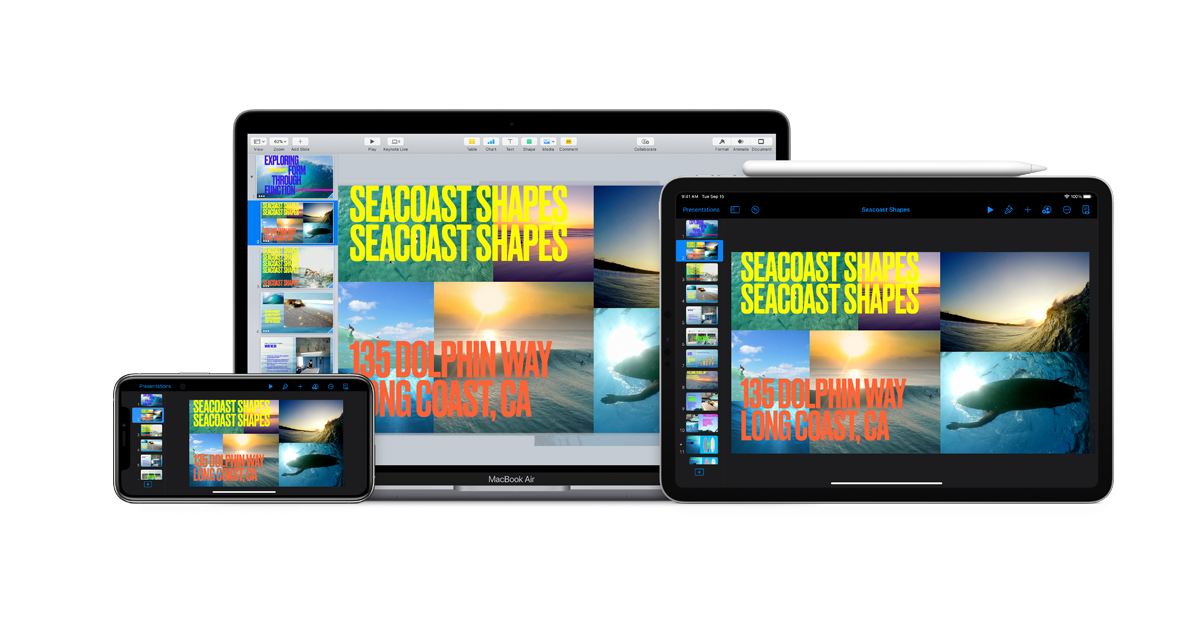
Voilà.Now that's a pretty sweet hack.(Note: This will not preserve any transitions from Keynote, only the final visual appearance of each slide. Now, next time you have a keynote file open that you want to convert to a powerpoint file comprised of flattened images, with no format issues, all you have to do is select the scripts menu item, and run the script. If you run the script here (with a keynote file open), it'll work through its sequence, ad next time you take the menu item, it'll be listed below. If not, take the "Open Scripts Folder" menu item, and choose "Open User Scripts Folder". If you select it, you may already see the script you just made listed. You should now be able to see a scroll-looking icon in your menu bar.Check the box "Show Script Menu in Menu bar" Make sure it's the Library folder for your username.) Call it what you want. Save this file into your Scripts Folder.Set v to ("Volumes" as POSIX file) as aliastell application "Finder" to set f to (make new folder) as text - create a temp folder to export imagestell application "Keynote"tell front documentexport to (file f) as slide images with properties end repeatdelete slide 1export to (newFile) as Microsoft PowerPointclose saving noend tellend telltell application "Finder" to delete folder f - delete the temp folderon getImages(f)tell application "Finder" to sort (files of folder f) by nametell application "Finder" to return (files of folder f) as alias listend getImages Paste the following into the new document:.Open the Applescript Editor on your mac.So here are some one-time steps to setting it up on your mac.after you do these, you'll be able to use it with one click from now on. However, I've had a nagging suspicion that I could script a way to do this in one step, and I finally got some help in making it work. So this is all well and good, and if you're content with a foolproof six step method, read no further. Delete the folder (on my desktop) where I create the image files.Convert the file to ppt by selecting File -> Export To -> PowerPoint.Assuming the size of the slides in this presentation are the same size as the one in step 1, what you now have is a new presentation mirroring your first one, except that now the fonts are flattened into the image! (You can drag them all at once.) This creates a slide for each image where the top layer is the image. Drag the images created in step 2 into the slide navigator (left column of thumbnails) on the new file.jpg by choosing File -> Export To ->Images. It works by flattening out the slides' layers into images, and making a new slideshow from the image files. ppt conversion process, and minimizes formatting problems. Over time, I've come up with a workflow that pretty dependably manages the.keynote ->. That little bit of character spacing or line-height difference gets nasty when you're looking at a 120-200 font. This is amplified by the fact that I use huge fonts sizes, which you should always do in presentations. Even beyond the forced font-ugliness, this causes a cascade of format and design issues-the sizing of the fonts will get out of whack, and the spacing of the characters on the page will go nuts. If I don't limit them, then invariably the font will simply be rendered by a stock font like Ariel or Calibri. For instance, I'll be limiting my font choices, because I can then only use fonts that I know are on the other computer. ppt, I'm asking for all kinds of problems.

And if I just export the keynote file straight into.

So every week I have to come up with a powerpoint version of the slide deck I've created.
#Apple keynote presentation font script Pc
It puts thing like transparency, adding shapes, text, changing layers, and all of those sorts of things at the forefront of the interface, while powerpoint seems determined to bury them beneath layers of menus and options that I never use.The problem, of course, is that I'm often creating the slide deck on my machine, and then running them on a different one.a PC that can only use.
#Apple keynote presentation font script software
It's presentation software with a design-centric user interface-making it much easier and more pleasant to work with than the mac version of Powerpoint. My favorite tool for doing this is Apple's Keynote. I actually love the process of crafting slides, and since I get to preach/speak regularly, it's something I've spent a fair amount of time doing.


 0 kommentar(er)
0 kommentar(er)
